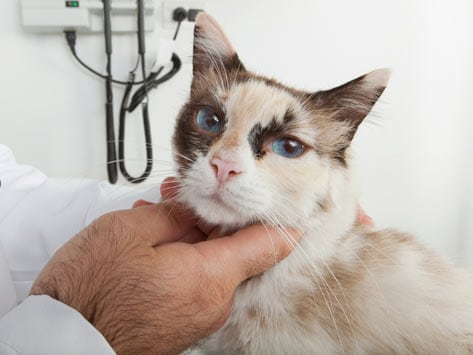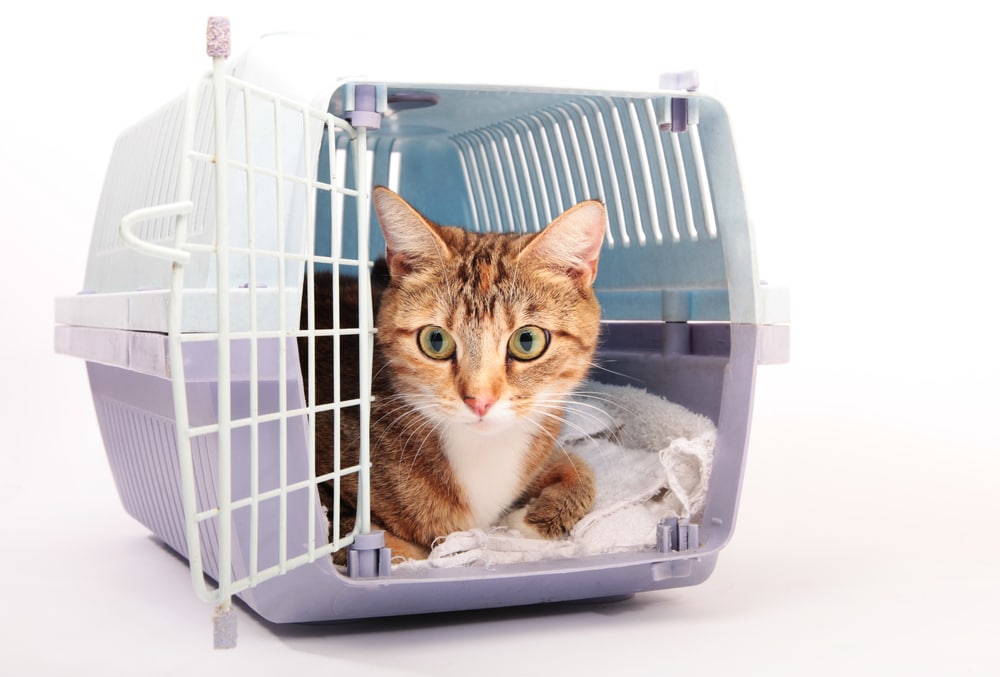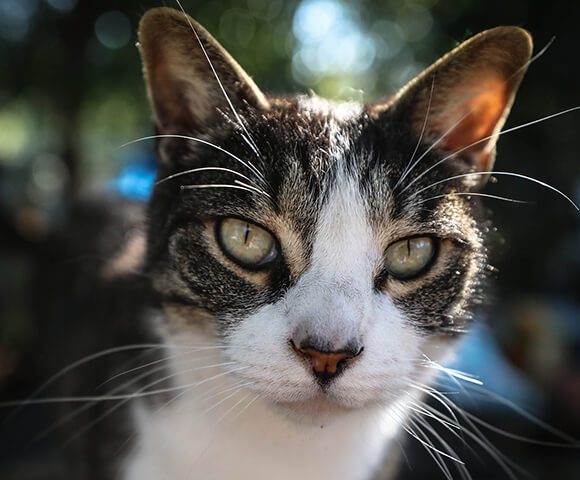Fibrosarcoma In Cats Mouth
In rare cases though, the cancer can be found in the bones of both animals. Fibrosarcomas form in the skin, subcutaneous tissue (the layer underneath the skin), or oral cavity (mouth).

Pin On Kitty And Oedipus
We found a small lump (a bit smaller than a marble) on her back, just to the side of her spine.

Fibrosarcoma in cats mouth. Vaccine associated fibrosarcomas are tumors that arise at sites where cats have been vaccinated. They are often very difficult to distinguish from the more common bone cancer osteosarcoma when small biopsy samples are evaluated. Many cats live long and happy lives after the cancer is removed.
A diagnosis of fibrosarcoma is not an automatic death sentence for your cat; What is a fibrosarcoma in a cat? Fibrosarcoma is an uncommon type of cancer to affect the bone.
The most common oral tumor seen in cats is squamous cell carcinoma; In cats, fibrosarcoma occurs on the skin. Fibrosarcoma may arise as a primary tumor in any part of the jaws and may be classified as either peripheral (periosteal) or central (endosteal) type.
Fibrosarcoma in cats is often found between the shoulder blades, on the back of the neck, and on the chest. because of this, fibrosarcomas are also referred to as injection site sarcomas or vaccine associated fibrosarcomas. In most cases, these signs are caused by treatable dental disease.
Fibrosarcoma is aggressive in the cells where it first appears, but slow to spread to other body organs or systems. We continue to give these vaccines because of the relatively high risk of contracting these diseases and the relatively low risk of developing a fibrosarcoma. Life expectancy of fibrosarcoma in cats thankfully, in most cases, cats who have been diagnosed with fibrosarcoma have a positive outlook.
The vet said we should send him to a specialist and have half his jaw removed. Vero cells (monkey kidney cell line) that were genetically modified in order to produce interleukine2 (hil2), were used. They arise as masses in the mouth more commonly than in the legs.
Oral fibrosarcomas are the second most common malignant oral tumor in cats. If your cat suddenly begins refusing food and acting uncomfortable around the mouth, there can be several possible causes for this change. The second most common is fibrosarcoma.
Both of these tumors are locally aggressive, can grow to a large size very quickly, ulcerate, and cause considerable pain. What organs does fibrosarcoma affect? The tumors vary in growth rate between cats and dogs and from breed to breed.
My 14 year old cat was just diagnosed with fibrosarcoma. Fibrosarcomas begin in the fibroblasts of the skin (cells in connective tissues) and in subcutaneous (under the skin surface) connective tissues. The tumor is locally invasive, and often recurs following surgery.
These tumors may spread to the underlying bone causing pain. Our vet removed it right away and quite a. It does not usually cause pain on touching.
Fibrosarcoma (fsa) is the second most common tumor of the feline oral cavity. Treatment involves surgical removal of the tumors and radiation treatment may be considered if surgery is incomplete. Fibrosarcoma in cats fibrosarcoma can appear anywhere, as it is a tumor that develops in the subcutaneous tissue and then in the muscles of the body.
Fibrosarcoma in dogs is often found in the mouth, particularly the jaw, and on the limbs. It is a mass that usually occurs in the skin of a cat at the site of an injection or vaccination. The tumor is slow to metastasize, but is locally aggressive.
Fibrosarcomas (also known as fibroblastic sarcomas) are malignant tumors derived from the fibrous connective tissue. Published rates of occurrence range from 1/1, 000 to 1/10,000 cats. In some cases, however, oral pain and reluctance to eat can be caused by an oral tumor.
This tumor tends to grow very quickly, to the point where it can ulcerate and become necrotic. Metastasis to organs is not common with both tumor types;. I want to do the best thi.
Cats diagnosed with fibrosarcoma can live for up to 3. My cat was just diagnosed with fibrosarcoma in the mouth. Most cats and dogs with oral cancer have a mass in the mouth noticed by the owner.
Secondary fibrosarcoma of the bone may be associated with fibrous dysplasia, paget's disease, bone infarct or cyst and/or osteomyelitis; Diagnosis may be performed through fine needle aspiration or biopsy. But as with all cancers, it must be caught early and treated, or it could become life threatening.
Radiation therapy and chemotherapy are also used in treatment. Oral fibrosarcoma will often look surprisingly benign. Depending on the severity of the tumor (for example, if the tumor has spread to other areas, or if it can be completely removed), cats can live up to 3 years after a diagnosis.
Fibrosarcoma is also a rare bone tumor in dogs. Oral fibrosarcoma is the second most common oral tumor in cats and the third most common in dogs. They are most commonly associated with the rabies vaccine and the vaccine for feline leukemia virus.
Fibrosarcoma occurs most frequently in the mouth in dogs. Clinical trials were carried out on cats having developed a fibrosarcoma. These tumors arise from the connective and fibrous tissues of the oral cavity.
What are the symptoms of oral fibrosarcomas in cats and dogs? At a younger age, with a median of 7.3 to 8.6 years; He has a tumor near his canine teeth.
And with a possible male predisposition. Pets with oral tumors will typically have symptoms of increased salivation (drooling), facial swelling, mouth bleed, weight loss, foul breath, oral discharge, difficulty Fibrosarcoma is a locally aggressive cancer of the soft tissues (typically skin) that is relatively common in cats.
A fibrosarcoma is a type of cancerous tumor that occasionally occurs in cats.

Mouth Cancer Gingiva Fibrosarcoma In Cats Petmd

Open Veterinary Journal 2019 Vol 94 331334 Case Report Doi Httpdxdoiorg104314ovjv9i410 Clinical Radiological And Pathological Findings Of Primary Nasal Osteosarcoma In A Libyan Cat Mohamed H Abushhiwa1 Seham A Al-azreg2

Mouth Cancer Gingiva Fibrosarcoma In Cats Petmd

Common Oral Tumors In Cats And Dogs - Vet In Aurora The Animal Dental Clinic
How To Help Your Cat Fight Cancer Naturally Homeoanimalcom

Mouth Cancer Gingiva Fibrosarcoma In Cats Petmd

Cats And Mouth Cancer - Cattime

Cat 6 Squamous Cell Carcinoma On Nose Stage T2 One Ect Session Download Scientific Diagram

Fibrosarcoma In Cats - Symptoms Causes Diagnosis Treatment Recovery Management Cost
/GettyImages-11673268481-ff230807a7e04e2db8e38e148edb19a5.jpg)
How To Treat Fibrosarcomas In Cats

Fibrosarcoma Soft Tissue Sarcoma International Cat Care

Connective Tissue Tumors In Animals - Integumentary System - Msd Veterinary Manual

Connective Tissue Tumors In Animals - Integumentary System - Msd Veterinary Manual

Fibrosarcoma - Wikiwand

Fibrosarcoma In Cats And Dogs Petcarerx

Feline Fibrosarcoma - Bluepearl Pet Hospital

Mouth Cancer Gingiva Fibrosarcoma In Cats Petmd

The 3 Most Common Cancers In Cats

Bump Or Lump On Cat Petfirst Pet Insurance